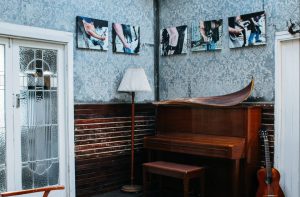Affordable Phase-Coherent Control Rooms and Studios
I recently had the pleasure of writing an article for Audio Times on phase coherence in studios, control rooms and performance spaces. You can read the entire article on the Audio Times website, but here is a little to get you started:
The art and science of acoustic design for control rooms and recording studios has evolved steadily, from 1930’s Bell Labs research, to the ‘70’s nearly-anechoic spaces, to the ‘80’s LA-style compression ceilings, to the 90’s quadratic-residue rooms. But the continuing trend toward recording in homes and small project studios has left many professionals wondering if studio acoustic design is now ‘devolving’. At Acoustic Geometry, we feel strongly that the challenge of consistent, accurate, and phase-coherent acoustics in smaller rooms is definitely moving forward.
You can read the the rest of the article, Affordable Phase-Coherent Control Rooms and Studios, at the Audio Times website.















2 comments on “Affordable Phase-Coherent Control Rooms and Studios”
Matt Mayfield
John,
Thanks for the intriguing articles. Can you please say a bit more about the math and physics of why phase-coherent diffusion is desirable, or point to an article about how it works?
It makes sense to me that you’d want phase-coherent transducers, since they’re supposed to reproduce sound accurately, and not have the lows and highs arriving at different times, or have the “click” of a bass drum the opposite polarity from the “thud.” But for diffusion, isn’t the goal to eliminate comb filtering and “spread out” sounds across frequencies as well as over space? I had thought that diffusers were *supposed* to disrupt phase coherence and smear the transients of reflections to accomplish their task. Can you shed some light on this?
Thanks!
Matt
John Calder
Hi Matt, thanks for your question.
My quick answer would be this: if we care about the affects of phase distortion in our electronics and speakers, why would we ignore phase distortion in our room treatments?
My longer answer is this: sound energy from voices, instruments, and transducers normally reflects intact (‘bounces’ at full strength) from flat surfaces like walls and ceilings. When these reflections re-combine with the ‘original’ sound, they are out of phase due to the added distance traveled to the listening position. This causes location- and frequency-dependent comb filtering.
Our goal with diffusion is to spread out that reflected sound energy so it is far less strong when it re-combines with the original sound, reducing the peaks and valleys in frequency response (comb filtering additions and subtractions). Diffusion also smooths the peaks and valleys over a wide area, resulting in a wider “sweet spot”.
When the diffused (spread) reflections are phase-coherent, the smoothing of peaks and valleys is consistent throughout the space. If the diffused sound is time-distorted (non-coherent phase), it results in less consistent peak-and-valley reduction throughout the space, or lobing.
As a side note, while absorption also reduces the reflected sound energy, using only absorption in room treatment results in an overly-damped listening environment, described as unnatural-sounding. We prefer to mix both absorption and diffusion in room treatments, which has given our customers’ room a wider- and smoother-sounding listening area.
I’m not aware of any studies to-date of phase coherence in diffusion, and we’re in the process of partnering with a certified acoustical test lab to explore this. The existing ASTM “Scattering Coefficient” standard is currently in dispute (it essentially calls for testing for diffusion in a pre-diffused space) and is undergoing committee review. Part of that review will likely examine adding a phase response measurement to a “diffusion response”measurement.
Thanks again,
John